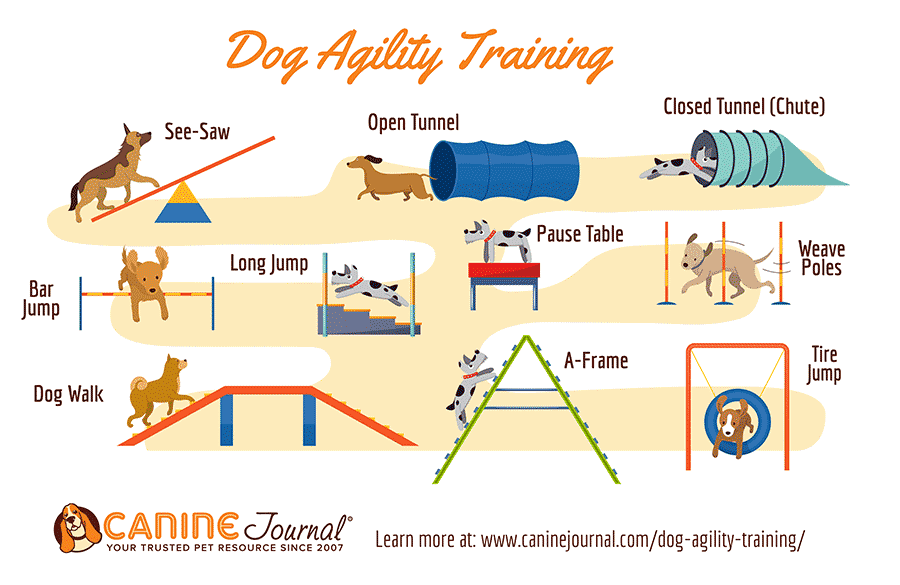Agility training offers a fun and productive way to engage your dog. Home-based exercises can include simple setups using household items. Start with basic jumps, tunnels, and weave poles. Use treats and positive reinforcement to encourage participation. Consistent practice helps improve your dog’s agility and obedience.
It’s a great way to keep your dog active and healthy. Create a safe environment free from hazards. Always supervise your dog during training sessions. Tailor the exercises to your dog’s fitness level and gradually increase difficulty. Agility training strengthens trust and communication, providing a rewarding experience for both you and your furry friend.

Credit: www.youtube.com
Introduction To Agility Training
Agility training for dogs at home strengthens the bond between pet and owner while improving physical fitness. Simple setups like tunnels and weave poles can transform your backyard into an exciting agility course.
What Is Agility Training?
Agility training is a fun activity for dogs. It involves obstacle courses. Dogs jump over hurdles and run through tunnels. They weave between poles and climb ramps. This training keeps dogs active and happy. It also helps them learn new skills. Owners guide their dogs through the course. This builds trust and strengthens their bond.
Benefits For Your Dog
Agility training has many benefits. It helps dogs stay fit and healthy. It also improves their coordination and balance. Dogs learn to follow commands better. This training boosts their confidence. Active dogs are less likely to get bored. A happy dog is a well-behaved dog. Agility training is great for mental stimulation. It provides a fun way to exercise.
Setting Up A Home Agility Course
Create an engaging home agility course to enhance your dog’s physical and mental skills. Use everyday items to build jumps, tunnels, and weave poles, ensuring a fun and safe environment for training.
Essential Equipment
Jump bars are great for dogs. Use broomsticks or PVC pipes. Tunnels can be made from large boxes. Weave poles are easy to set up with garden stakes. A-frames can be built with wooden planks. Pause tables can be a small, sturdy table.
Diy Course Ideas
Set up weave poles with sticks in the ground. Use old tires for tunnel fun. Create jumps with broomsticks. Build an A-frame with two planks. Use a sturdy box for a pause table.
Training Techniques
Teaching basic commands is vital. Start with commands like sit, stay, and come. Use a calm voice. Dogs learn better with consistency. Practice these commands daily. Reward good behavior with treats.
Positive reinforcement is key. Praise your dog when it follows commands. Use treats or toys as rewards. This makes training fun for your dog. Always be patient. Keep training sessions short but frequent.

Credit: www.pinterest.com
Safety Tips
Ensure your dog’s safety during agility training at home by using non-slip surfaces and removing any obstacles. Supervise closely to prevent injuries and start with simple exercises to build confidence.
Preventing Injuries
Use soft surfaces for training. This helps to protect paws and joints. Clear the area of any sharp objects. These can cause cuts or bruises. Always start with a warm-up. This helps to prevent muscle strains. Supervise your dog closely. This helps to avoid unexpected accidents. Provide plenty of water breaks. This keeps your dog hydrated and healthy.
Monitoring Your Dog’s Health
Check your dog’s paws after training. Look for cuts or scrapes. Watch for signs of fatigue. Rest if your dog seems tired. Observe your dog’s behavior. Any limping should be taken seriously. Keep your vet’s number handy. Contact them if you notice unusual symptoms. Ensure your dog is up-to-date on vaccinations. This protects against diseases.
Advanced Agility Drills
Start with simple jumps. Gradually increase the height. Use household items like pillows. This builds confidence in your dog. Introduce weave poles next. Use cones or sticks for this. Guide your dog through the poles. Reward with treats and praise. Add tunnel exercises last. A cardboard box works well. Make the tunnel longer each time. Your dog will learn quickly.
Short sprints are great. Use a leash for control. Run with your dog in the yard. Repeat this daily. Increase the distance over time. Play fetch often. This improves stamina. Use different toys to keep it fun. Another way is to set up obstacle courses. Use items you have at home. Change the course layout often. This keeps your dog engaged.

Credit: www.caninejournal.com
Frequently Asked Questions
How To Start Agility Training At Home?
Begin with basic obstacles like tunnels and jumps. Gradually increase difficulty as your dog gains confidence and skill.
What Equipment Is Needed For Home Agility?
You need tunnels, jumps, weave poles, and a seesaw. DIY options are available for budget-friendly setups.
How Often Should I Train My Dog?
Train 2-3 times a week. Short, consistent sessions are better for maintaining your dog’s interest and progress.
Can Any Dog Do Agility Training?
Yes, any dog can try agility. It’s great for physical and mental exercise, regardless of breed or size.
Conclusion
Agility training for dogs at home can be rewarding and fun. It strengthens bonds and keeps dogs active. Start with simple exercises and gradually increase difficulty. Consistency and patience are key to success. With practice, your dog will master agility skills and stay healthy.
Happy training!





